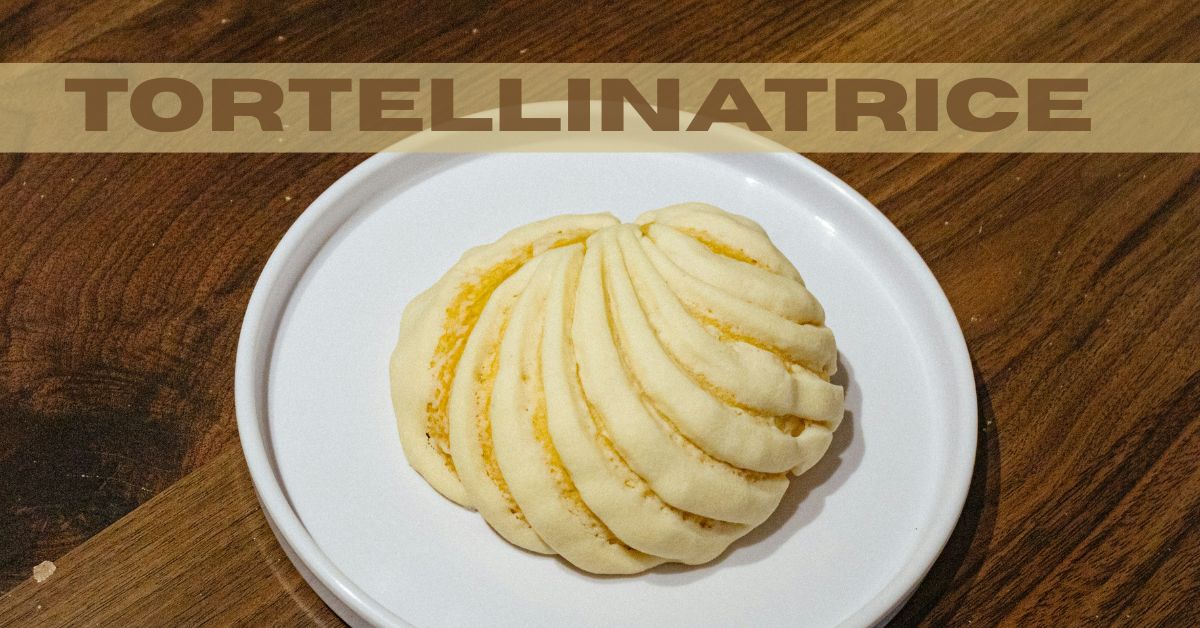When it comes to the world Tortellinatrice of Italian cuisine, pasta holds a special place, and among the most beloved pasta varieties is the elegant and delicious tortellini. These small, ring-shaped pasta filled with meat, cheese, or vegetables have long been a staple of Italian kitchens, particularly in the Emilia-Romagna region. While traditional tortellini are made by hand, the invention of the tortellinatrice—a machine designed specifically to automate the production of tortellini—has revolutionized both small-scale and industrial pasta production.
In this article, we’ll explore what a tortellinatrice is, how it works, its history, significance in modern culinary settings, benefits, and how it continues to support tradition while embracing innovation.
What Is a Tortellinatrice?
A tortellinatrice is a specialized pasta-making machine used to automate the process of making tortellini. Derived from the word tortellini (the type of pasta) and the Italian suffix -atrice (indicating a machine or device that performs an action), the term literally means “tortellini maker.”
These machines can be found in various forms, ranging from compact models suitable for small restaurants to high-capacity industrial machines used by pasta manufacturers. They are engineered to mimic the intricate process of creating tortellini: cutting the dough into squares or circles, placing a precise amount of filling, folding the pasta, and finally sealing it into its iconic ring shape.
A Brief History of the Tortellinatrice
The origins of tortellini date back centuries, with folklore linking their shape to the navel of Venus, the Roman goddess of love. Traditionally, tortellini were hand-rolled and folded by skilled pasta makers, a labor-intensive process requiring precision and practice.
With the rise of industrialization in the 20th century, Italian engineers sought ways to replicate traditional pasta-making processes using machines. This led to the development of various pasta machines, including the tortellinatrice, in the mid to late 1900s. These machines were created to preserve the quality and authenticity of tortellini while drastically increasing production speed and consistency.
How Does a Tortellinatrice Work?
The core function of a tortellinatrice is to streamline the entire process of making tortellini in a uniform and efficient manner. Here’s a step-by-step breakdown of how the machine typically operates:
- Dough Feeding
The pasta dough is rolled into sheets and fed into the machine either manually or automatically, depending on the model. - Cutting the Dough
The machine cuts the dough into small, uniform shapes (usually circles or squares), mimicking the hand-cut process. - Filling
A pre-prepared filling (cheese, meat, spinach, etc.) is deposited onto the dough in precise, consistent portions. - Folding and Shaping
The machine then folds the dough over the filling, sealing it and curling it into the traditional ring shape. - Ejection or Packaging
Once shaped, the tortellini are either ejected onto a conveyor belt for drying, cooking, or packaging.
Advanced models also have features to detect misshapen pasta, adjust filling ratios, or interface with other machines in automated production lines.
Types of Tortellinatrice Machines
Tortellinatrice machines come in a variety of types, based on usage and production needs:
- Manual Tortellinatrice: Used in small artisanal shops or restaurants. These machines require human operation but provide greater control and customization.
- Semi-Automatic Machines: Suitable for small to medium-sized businesses. They require limited operator input and are ideal for balancing production volume and traditional quality.
- Fully Automatic/Industrial Machines: Designed for mass production. These models integrate with industrial pasta lines and can produce thousands of tortellini per hour with consistent quality.
Benefits of Using a Tortellinatrice
The introduction of the tortellinatrice has significantly improved the efficiency and scalability of tortellini production, without sacrificing quality. Some notable benefits include:
- Consistency: Ensures every tortellino is uniform in size, shape, and filling quantity.
- Speed: Dramatically increases production rates compared to manual methods.
- Hygiene: Reduces human handling, thereby improving sanitary conditions.
- Cost-Effective: Reduces labor costs in the long term and increases yield.
- Customization: Advanced models allow for adjustments to filling type, size, and shape.
Supporting Culinary Traditions
Despite its mechanical nature, the tortellinatrice doesn’t aim to replace the artistry of pasta making—it seeks to preserve it. Many small and medium producers use the machine to meet growing demand while still employing traditional recipes and locally sourced ingredients. This fusion of old and new allows businesses to maintain authenticity while thriving in competitive markets.
In fact, in culinary schools and artisanal pasta workshops, it’s common to see students learning both handcraft and machine-based tortellini production, appreciating the skill involved in both methods.
Choosing the Right Tortellinatrice
For restaurateurs, chefs, or entrepreneurs interested in pasta production, selecting the right tortellinatrice depends on several factors:
- Production Volume: Consider how much tortellini you need to produce daily or weekly.
- Type of Filling: Some machines are optimized for specific fillings (e.g., dry vs. moist).
- Budget: Prices vary widely—from a few thousand dollars for a manual model to tens of thousands for industrial setups.
- Ease of Use and Maintenance: Look for machines that are easy to clean, maintain, and operate.
Brands like La Monferrina, Imperia, and Pama Roma are well-known manufacturers of reliable tortellinatrice models, often providing customization and customer support for international buyers.
Tortellinatrice and the Future of Pasta Making
As technology continues to evolve, so do pasta-making machines. The future of tortellinatrice lies in smart technology integration—sensors, AI-driven quality control, and sustainable energy use. These innovations are geared towards improving efficiency, reducing food waste, and enhancing product quality.
Moreover, there’s growing interest in machines that can handle gluten-free or alternative flours, meeting the dietary needs of a modern, health-conscious consumer base.
Conclusion
The tortellinatrice is a brilliant example of how culinary heritage can be honored and enhanced through innovation. It brings the joy of tortellini to tables around the world while helping businesses scale and succeed. Whether you’re a seasoned pasta artisan or an entrepreneur exploring the world of Italian cuisine, the tortellinatrice is a testament to how tradition and technology can deliciously coexist.
FAQs
Q1: Can a tortellinatrice be used for other types of pasta?
Some models have interchangeable parts or settings that allow for making ravioli or other stuffed pasta, but most are specialized for tortellini.
Q2: Is handmade tortellini still better than machine-made?
Handmade tortellini have an artisanal charm and subtle variations, but high-quality machines can produce pasta that is virtually indistinguishable in taste and texture.
Q3: How much does a tortellinatrice cost?
Prices vary from $2,000 for small models to over $50,000 for industrial machines.
Q4: Do I need special training to operate one?
Basic training is usually sufficient, especially for smaller or semi-automatic machines. Manufacturers often provide tutorials or on-site training.
Q5: Where can I buy a tortellinatrice?
You can purchase them from specialized kitchen equipment suppliers, Italian manufacturers, or online marketplaces like Alibaba or Amazon Business.
Ask ChatGPT











